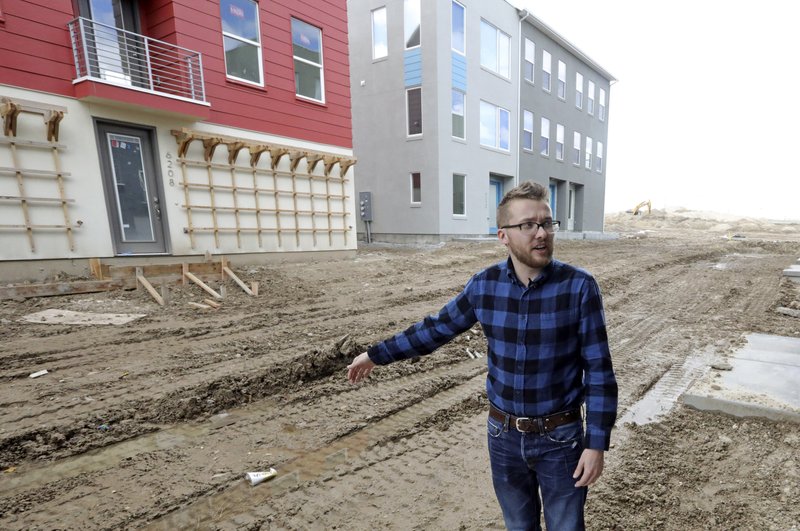SALT LAKE CITY -- Rising home values are driving some first-time buyers out of the most expensive cities and pressuring others to buy quickly, according to an Associated Press analysis of real estate industry data provided by CoreLogic.
Home values in more than three-quarters of U.S. metro areas are climbing faster than incomes, meaning that some buyers are at risk of being completely priced out of their market. The high cost of homeownership is adding to the stresses on millennials -- whose ages range from roughly 23 to 38 -- as they try to balance mortgage payments, student loans, child care and their careers.
"They do want all the same things that previous generations want," said Daryl Fairweather, chief economist for the brokerage Redfin. "They just have more roadblocks, and they're going to have to come up with more creative solutions to get the homes that they want."
A Redfin analysis found these buyers are leaving too-hot-to-touch big-city markets -- among them, San Francisco and Seattle, where the tech boom has sent housing prices into the stratosphere. The brokerage found that many millennials are instead buying in more reasonably priced neighborhoods around places like Salt Lake City, Oklahoma City and Raleigh, N.C. That, in turn, is driving up housing prices in those communities.
Jake and Heather Rice, both 35, moved to Utah last year from Mountain View, Calif., where the biggest employers are tech giants such as Google, Symantec and Intuit and the median home price is a dizzying $1.4 million or so.
The couple and their three children settled into a 4,500-square-foot house in fast-growing Farmington, just far enough away from Salt Lake City to feel rural but minutes from a major shopping center and Heather Rice's sister. They did not disclose the purchase price for the sake of privacy, but they said their monthly mortgage payments will be $3,000, roughly the same as the rent for their former two-bedroom, 1,000-square-foot apartment in Mountain View.
"We didn't expect to stay in California because of how ludicrous the prices had become," said Jake, a mechanical engineer who works in the medical device sector.
Nationally, home prices since 2000 have climbed at an annual average rate of 3.8%, according to the data firm CoreLogic, while average incomes have grown at an annual rate of 2.7%. And in the metro areas with the strongest income growth -- for example, parts of Silicon Valley -- home prices have risen even faster.
The Salt Lake City area is among the hottest spots for first-time buyers in part because of a staggering burst of home construction and a surge of high-tech jobs. The suburb of Lehi served as a film location for the 1984 Kevin Bacon movie Footloose, about a rural town that banned dancing. Today Lehi is in what is now known as "Silicon Slopes" because Adobe, eBay and Microsoft have opened offices there.
Of course, the influx of people from unaffordable cities is contributing to the very problem they were trying to escape: Home prices in the greater Salt Lake City area surged 10.8% in the past year, while average incomes rose only 3.9%, according to figures from CoreLogic and the U.S. Bureau of Labor Statistics.
Scott Robbins, president of the Salt Lake Board of Realtors, sees the price growth as having changed the habits of first-time buyers. They are putting less money down and carrying more debt. And some first-time buyers are looking at condos and duplexes instead of houses.
There is also more pressure on families to earn two incomes, rather than letting one choose to be the stay-at-home parent. This could be a particular challenge in the Salt Lake City area, where families are generally larger, mostly because of the influence of the Church of Jesus Christ of Latter-day Saints, and about 28% of the population is under 18, compared with nearly 24% nationwide.
"The one thing that really would make it even more sustainable is if wages would increase," Robbins said. "Whereas before you could have a young couple buy a place and only one of them would work, now you need both of them to work."
A Section on 05/26/2019

